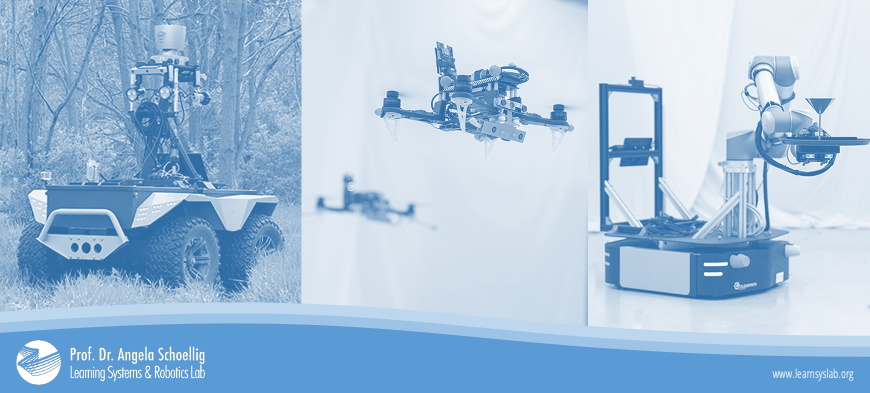 | |
Project Overview | Project Code: CIT 11 |
|---|---|
| Project name: | safe-control-gym+: A Unified sim2real Benchmark Pipeline for Safe Robot Learning and Control |
| TUM Department: | CIT - Electrical and Computer Engineering |
| TUM Chair / Institute: | TUEILSY Chair of Safety, Performance and Reliability for Learning Systems (Prof. Schoellig) |
| Research area: | Robotics, Machine Learning, System Control |
| Student background: | Computer ScienceComputer Science/ InformaticsElectrical EngineeringMechanical Engineering |
| Further disciplines: | |
Planned project location: | Theresienstr. 90, 80333 Munich, Germany |
Project Supervisor - Contact Details | |
|---|---|
| Title: | Prof. |
| Given name: | Angela |
| Family name: | Schoellig |
| E-mail: | angela.schoellig@tum.de |
| Phone: | +49 (89) 289 - 25336 |
Additional Project Supervisor - Contact Details | |
|---|---|
| Title: | Dr. |
| Given name: | SiQi |
| Family name: | Zhou |
| E-mail: | siqi.zhou@tum.de |
| Phone: | +49 (89) 289 - 25334 |
Additional Project Supervisor - Contact Details | |
|---|---|
| Title: | |
| Given name: | Lukas |
| Family name: | Brunke |
| E-mail: | lukas.brunke@tum.de |
| Phone: | +49 (89) 289 - 25334 |
Project Description | |
|---|---|
| Project description: | 1. Introduction and Background: Robots are playing an increasingly important role in our lives. Examples include, but are not limited to, autonomous driving, drone delivery, and service robots. In real-world deployments, robots are required to safely operate and learn despite uncertainties such as unknown road and weather conditions or unknown room layouts. Our recent survey paper [1] summarizes the advances in safe decision-making from both the controls and reinforcement learning communities. While algorithms proposed by both communities have shown ever-increasing capabilities of guaranteeing safety under uncertainties, the algorithms are rarely compared to each other on well-defined benchmark problems. To this end, we recently released a simulation benchmark suite, called "safe-control-gym" [2], to examine the performance, data efficiency, and safety of traditional model-based control, learning-based control, and safe reinforcement learning approaches. The benchmark suite currently includes two simulation environments (cart-pole and quadrotor), 12 control/learning-based decision-making algorithms, and a set of metrics for evaluating the algorithms' data efficiency, robustness, and performance. |
| Working hours per week planned: | 40 |
Prerequisites | |
|---|---|
Required study level minimum (at time of TUM PREP project start): | 2 years of bachelor studies completed |
| Subject related: | Robotics, control theory, dynamic systems, reinforcement learning, and programming (Python and C++) |
| Other: | Preferred experience in Robot Operating System (ROS), PyTorch, control or reinforcement learning algorithm implementations, and optimization |